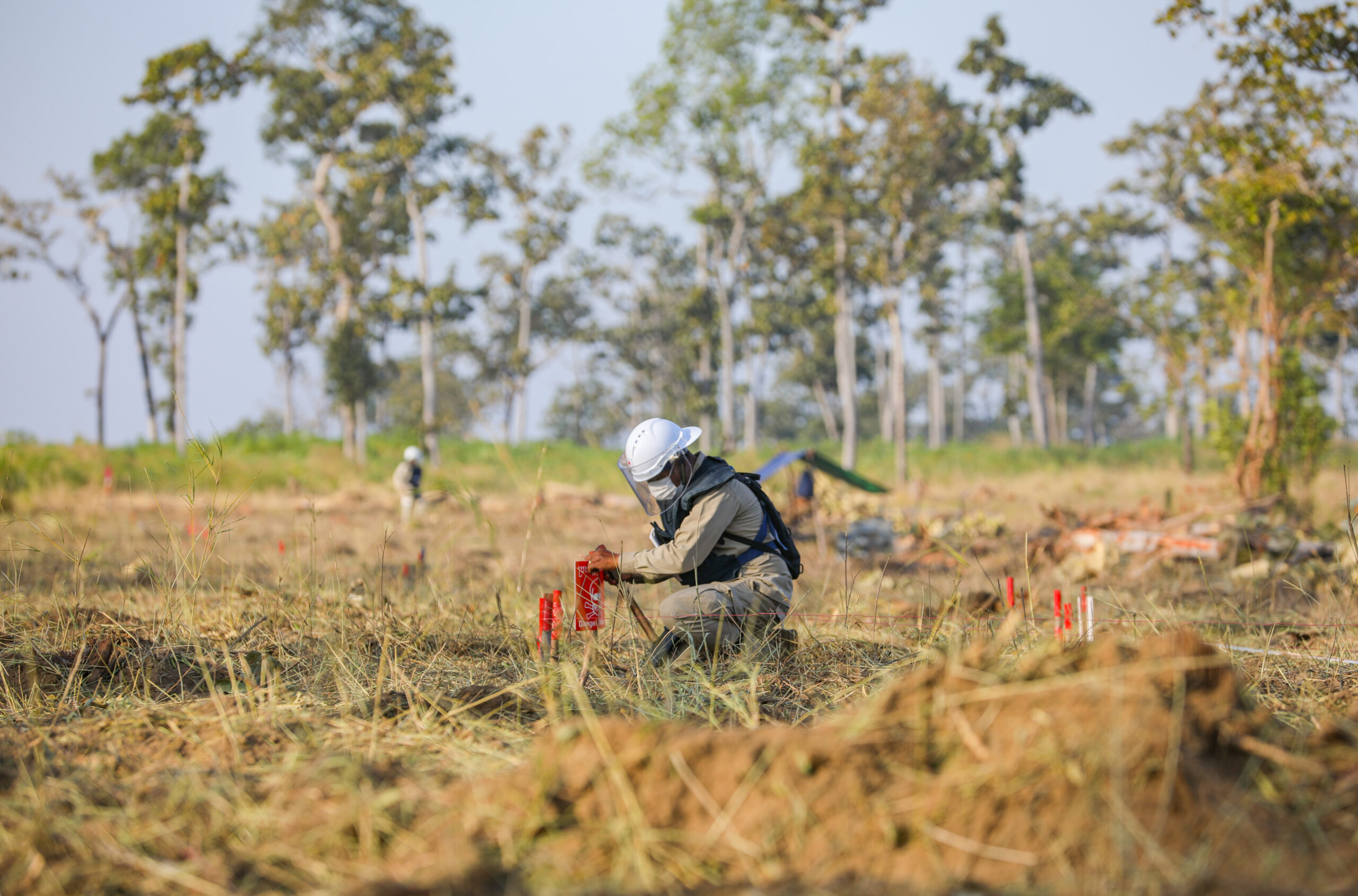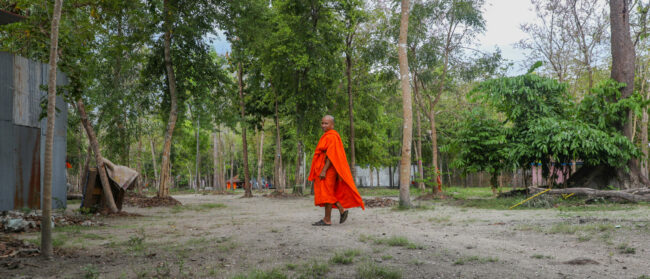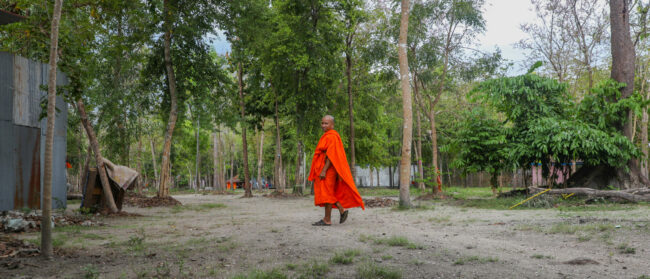The official end of a conflict leaves a country with obvious physical scars, from devastating death tolls to levelled landscapes. But a war’s effect on a country evolves. In Indochina, casualties continue because of unexploded remnants of war.
Efforts to remove these weapons have gone on for decades and carry numerous expenses including landscape surveys, detection equipment, safety gear and medical teams.
Financing the removal of landmines and other unexploded ordnance, also known as ‘mine action,’ is a cornerstone of United States foreign policy in Indochina, especially in Cambodia, Laos and Vietnam, which were left riddled with the weapons following American military campaigns.
These funds are often coordinated through the U.S. Department of State and have remained relatively steady over the past few years. The department’s most recent budget proposal for the 2023 fiscal year, however, indicates a potential drop in funding for conventional weapons destruction in Indochina.
If the regional budget requests are confirmed, support for unexploded ordnance removal in Laos, considered the most bombed country in the world per capita, would be hit the hardest. Katie Harrison, a program coordinator for Norwegian People’s Aid in Laos, said reductions would “decrease our team size and decrease the amount of square metres we can clear.”
While a state department official stressed the difference between requests and allocations, U.S. advocates worry imminent cuts could set a precedent for annual funding declines.
“Any proposed cut would endanger the lives of the people, animals and environment,” said Sera Koulabdara, executive director of Legacies of War, a U.S.-based lobbying group for mine action funding. “Our focus should be on increasing greater support for demining efforts in Laos, Cambodia and Vietnam year after year.”
Regardless of potential reductions for the region, the U.S. will likely remain the world’s biggest wallet for humanitarian mine action. But requested cuts may indicate a “potential shift in foreign policy” and “new donor priorities,” said Marion Loddo, who studies international aid for the Landmine & Cluster Munition Monitor, a research organisation focused on the sector.
“We are in this context of compounding crises because we have so many topics to tackle and address,” said Loddo, who added that current crises should be addressed with additional funding. “We should make sure that countries with legacy contamination, like Laos, still receive the support they need. Otherwise it means we are leaving some of them behind.”
Legacy ordnance
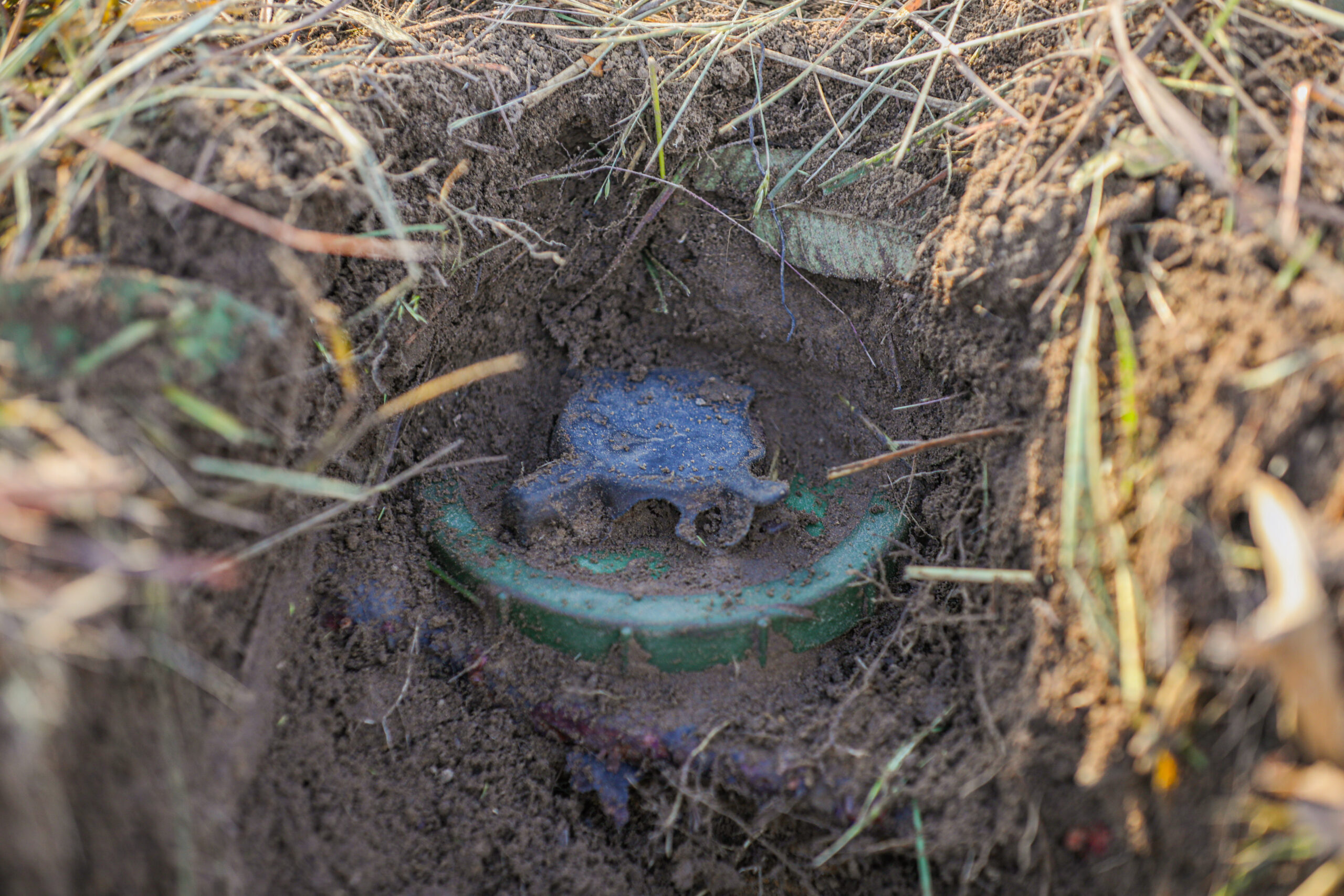
Similar to most countries affected by unexploded remnants of war, Laos relies on foreign aid to clear aerial bombs and cluster munitions. Funding clearance from the Laotian government amounted to $30,000 in 2019, recorded by the Landmine & Cluster Munition Monitor, compared to $42 million from donors.
More than $643 million went to addressing unexploded remnants of war in 40 affected nations in 2020, according to the monitor. About 36% was donated by the U.S., which has been the world’s largest funder of humanitarian mine action since 1999.
The overwhelming American contribution to the cause in Southeast Asia is only matched by the country’s historic contributions to the issue.
During the Cold War, U.S. efforts to curb communism in Indochina by means of all-out war or covert missions seeded the region with landmines and other unexploded ordnance. The remnants of war have plagued Cambodia, Vietnam and Laos ever since.
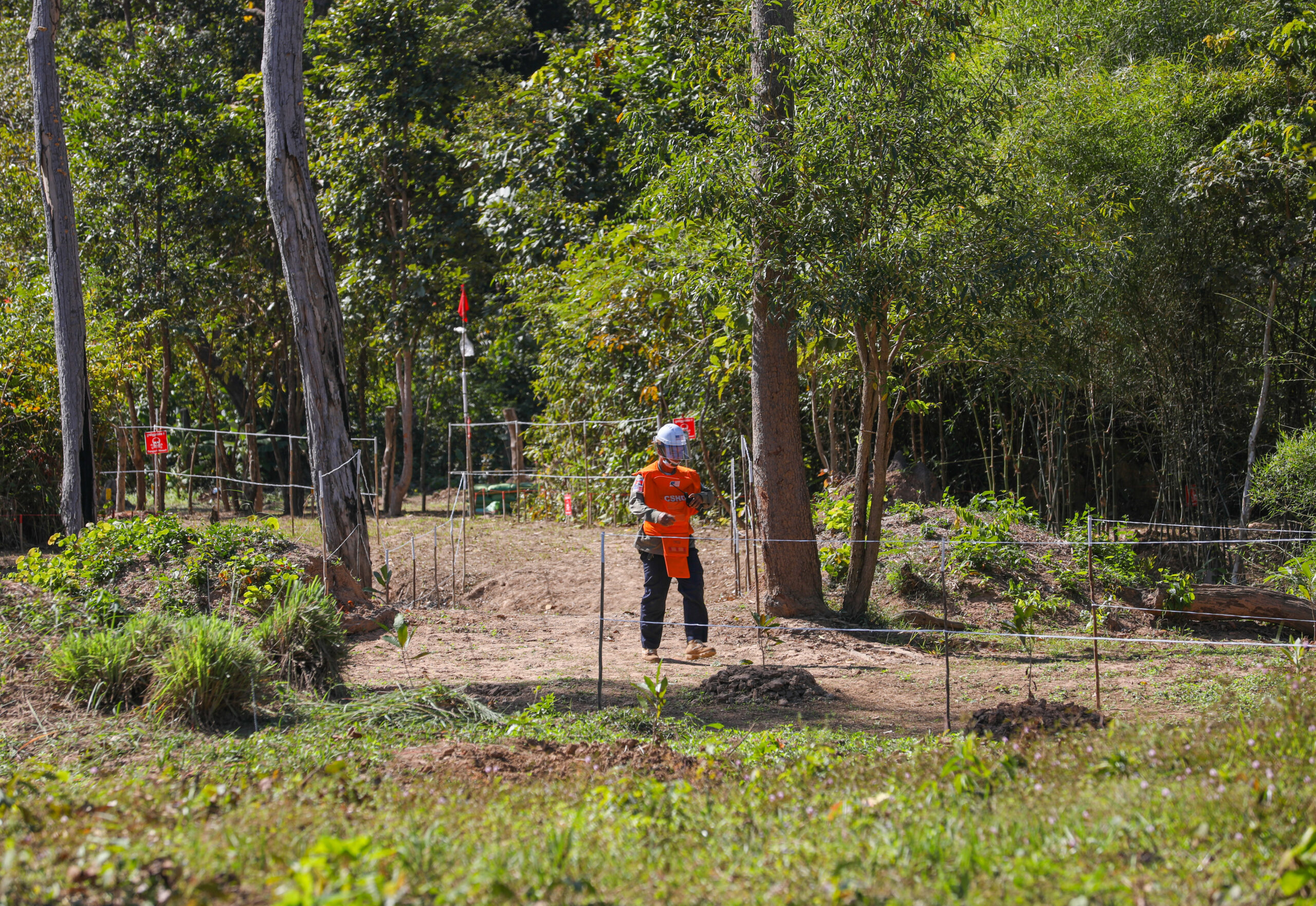
The so-called “secret war” conducted by the U.S. in Laos lasted nearly a decade and involved more than 2 million tons (1.8 million metric tonnes) of ordnance.
Barack Obama became the first sitting U.S. president to visit Laos in 2016. “Given our history here, I believe that the United States has a moral obligation to help Laos heal,” he said.
“This is a fundamental component of bilateral agreements in the region,” said an official with the Office of Weapons Removal and Abatement in the Department of State’s Bureau of Political-Military Affairs, who declined to be named. “Working on our war legacy issues in countries, like Laos, is a fundamental part of our presence there.”
The 2023 Congressional Budget Justification from the state department requests roughly $237 million for conventional weapons destruction, listed as “Nonproliferation, Anti-Terrorism, Demining and Related Programs,” which is $17 million less than the prior year’s request.
The official contextualised the budget by explaining the U.S. government has multiple avenues to fund humanitarian mine action, listing initiatives by the Agency for International Department and the Department of Defense’s Humanitarian Demining Research and Development Program.
“There may be discrepancies between what is requested and appropriated. These discrepancies are nothing more than us working through the bureaucracy of funding, which has limits and restrictions,” the official said. “Congress prioritises U.S.-origin contamination and continues to take responsibility for past actions.”
If the proposed budget is approved, “East Asia & Pacific” encompassing Laos, Cambodia and Vietnam would be among the regions cut deepest. The latter two nations, however, would be left relatively unscathed.
Vietnam may receive an additional $2 million for 2023 mine action compared to the previous two years. Funding would remain unchanged for Cambodia, which recently recognised 30 years since official mine action began but is still considered one of the most mine-affected countries in the world.
The state department requested $24.4 million for conventional weapons destruction support in Laos for 2023, a 60% drop from the $40 million received in 2021 and more than $5 million less than 2022.
“If U.S. funding were to be reduced, it would be difficult to replace it with other donors because there are many competing priorities and other donors may not have the same sort of long-term relationship or obligation the U.S. has to Laos,” Harrison of Norwegian People’s Aid said.
As an American, Harrison believes her government is obligated to help: “We are clearing U.S. munitions that were dropped illegally in a secret war. I would expect the U.S. should be the largest donor to clearance efforts in Laos.”
The U.S. Embassy in Laos declined to be interviewed, stating “we continue to work together on resolving the painful legacy of war” and hope “to remove UXO as a barrier to Laos’ national development by 2030.”
The potential blow to funding would coincide with the 50th anniversary of the last American bomb dropped in Laos.
“If we really say we should care about ASEAN nations, with [President Joe Biden] hosting the U.S.-ASEAN summit, why not do the right thing and support these countries where they are asking for support,” Koulabdara of Legacies of War said. “We should not be going backwards, we should be going forward.”
Legacies of War has lobbied members of Congress to alter the proposed cut to conventional weapons destruction funding.
More than a hundred U.S. House representatives signed a letter in April that said “more resources are needed to remove this deadly detritus of war, demonstrate continued resolve for removing U.S. legacy ordnance, and strengthen diplomatic relations.”
A similar letter signed by nearly half of the U.S. Senate in May said “continued U.S. leadership in demining will promote effective and efficient programs that save lives, promote economic development, facilitate stability, and expand American influence.”
The two documents requested a global budget of $290 million for conventional weapons destruction, compared to the current request of about $237 million. The letters supported a $80 million allocation to East Asia & Pacific, $50 million of which would go directly to Laos.
The state department official pointed to total year-to-year increases of U.S. funding to Laos as proof Congress has continued its commitment to the country.
While the 2023 fiscal year will begin in October 2022, the official explained the budget will likely be approved in portions over the next several months.
Koulabdara worked with senators to introduce the Legacies of War Recognition and Unexploded Ordnance Removal Act in 2020. The bill would have secured $100 million for Cambodia, Laos and Vietnam each fiscal year from 2021 to 2025. The most recent action on the bill was a September 2020 referral to the Committee on Foreign Relations.
“This is long overdue. It should have already been passed. We should already be receiving greater than $100 million a year,” said Koulabdara, who was born and lived in Laos for six years until her parents emigrated to the U.S. to avoid the dangers of unexploded ordnance.
“This is a humanitarian issue and we should treat it as so,” Koulabdara said. “It should be our top priority.”
Competing crises
The majority of foreign aid fueling humanitarian mine action derives from five donors: America, the European Union, Germany, Japan and Norway. Their contributions accounted for 75% of international funding in 2020.
“Without international aid, we would not be able to have the same levels of operation,” Loddo said. “That is pretty evident.”
With mine action so dependent on a short list of donors, Loddo explained a policy shift or budget cut is “never good news.” Although there are only slight variations in overall annual donations, she has observed a “context of competing risks. You have Ukraine, Afghanistan, Covid, the environment.”
The shifts in donations present an ongoing challenge for Laos and others trying to secure the money to sweep away the remnants of war.
“By studying support for mine action,” she said, “we can show the donor community what is available, what are the gaps and what we need to do to not let those major crises overshadow mine action.”
